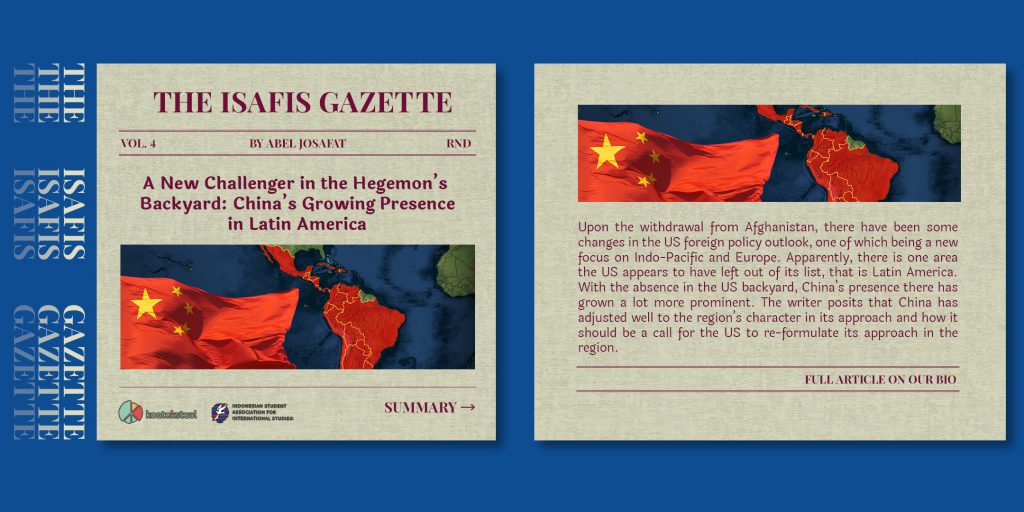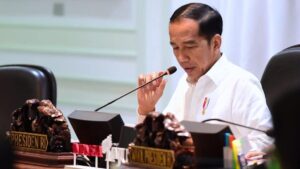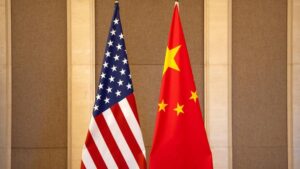A New Challenger in the Hegemon’s Backyard: China’s Growing Presence in Latin America

Illustration from ISAFIS
This article is originally published on ISAFIS’ Medium. Click here to be redirected.
The year 2022 has brought a lot of change in the international system, either in a new move by the states or a continuation of their recent changes. One of them is the US which after its withdrawal from Afghanistan has made some changes in its international agenda. Added or accentuated in its agenda are Indo-Pacific and Europe where in each of them lies an emerging power, China and Russia respectively. Many have mentioned how the new focus is a reactionary move to balance the influence of both emerging powers in the respective regions. With the two new focuses, it appears that something is incomplete. This is also supported by the US position in the Russia-Ukraine conflict. Unfortunately, the US apparently has left an important region with no policy renewal, that region being its very own backyard of Latin America. With the lack of new focus or the overall presence of the US, China has taken into its own hands a lot of new rapprochements and projects there.
In recent years, China has been involved in numerous cooperations and projects with many Latin American countries. The cooperations and projects China has are spread across numerous fields, from the energy and infrastructure sectors to the economic agreement that resulted in the creation of trade agreements. In a general look at trade relations between the two, China has been a huge buyer of LATAM commodities, especially agricultural and industrial output. There have been many meetings, especially at the ministerial level, between China and the Community of Latin American and Caribbean States Forum (Xinhua, 2018). The ties enhanced by the aforementioned meetings would later better accommodate interactions between the two, especially in economic terms.
Not stopping there, China has also maintained cultural diplomacy with the region with the Confucius Institute as a clear example of it. Formed by China’s Ministry of Education, the institute would act as a means to provide access to Chinese culture (from language to the overall culture) to every country that has it in place (MacDonald, 2022). Many have also assumed how the institutes also take part as agents that spread China’s narrative in issues like the China-Taiwan issue to the South China Sea dispute. With the institutes’ presence in numerous LATAM countries (Argentina, Brazil, Chile, etc), it would undoubtedly support China’s presence there.
Another example of China’s growing presence would be how it influenced the shift of some LATAM countries on the China-Taiwan issue. In the contest for recognition, China scored another win there, after Panama and Dominican Republic cut ties with Taiwan back in 2017 (Reuters, 2017) and in 2018 respectively. Despite the US position in the western hemisphere and its deep relation with Taiwan, they could only helplessly witness the policy shift. One interesting thing to be noted in that shift of foreign policy is how they were influenced by China’s better understanding of what the countries in that region want.
As mentioned and shown before, through the recent developments made by China, it appears that they have a better understanding of how to approach and enhance relations with the LATAM countries. Looking at how and what China has to offer, the difference it has from the US’ can clearly be seen. The US has been known for their offer in matters of security and its own agenda of balancing China’s influence, in both military and non-military fashion. On the other hand, China has been engaging the countries in the region to be involved in its economic projects, one of them being the Belt and Road Initiative (CGTN, 2021). The strong emphasis on economic matters and cooperation is exactly what many LATAM countries are interested in.
How China has presented itself to its new partners is also a way to change the negative image it received during the cold war and its clashes with the US. It serves as a way to deliver an image of China that is interested in positive-sum interactions, one that would benefit its partners (Chen, 2021). Compared with what the US has to offer, it is no surprise that they would prefer to work with China as it offered them a lot of economic benefits. The economic incentives China could bring to the region could also be a catalyst for developments to materialize.
A new outlook in foreign policy is urgently needed if the US were to enhance its relations and stand in its own backyard. A proper understanding of what the region needs would be something that is beneficial to that end. Moreover, such renewal would also support other US endeavors, especially in Indo-Pacific and Europe. At last, such a decision to make the necessary changes is at the hand of the Biden administration. However, if the US is still banging on the doors of its future allies with the same emphasis on security and its own interest, it is safe to assume that any country on the other side would not be opening the door.
References:
CGTN. (2021). What’s the common dream of China and LatAm countries?. Retrieved 16 May 2022, from https://news.cgtn.com/news/2021-06-19/What-s-the-common-dream-of-China-and-LatAm-countries–11cuk2ALnWg/index.html
Chen, C. (2021). China in Latin America Then and Now: A Systemic Constructivist Analysis of China’s Foreign Policy. Journal Of Current Chinese Affairs, 50(2), 111-136. doi: 10.1177/18681026211034880
MacDonald, S. (2022). Soft Power, Confucius Institutes, and Latin America and the Caribbean. Retrieved 16 May 2022, from https://theglobalamericans.org/2022/02/soft-power-confucius-institutes/
Reuters. (2017). Panama breaks with Taiwan as it establishes ties with China. Retrieved 16 May 2022, from https://www.reuters.com/article/us-panama-china-taiwan-idUSKBN19407Q
Xinhua. (2018). China-LatAm cooperation based on common interests. Retrieved 16 May 2022, from https://www.chinadailyasia.com/articles/56/44/50/1517643442510.html
Abel Josafat Manullang is a Research and Development staff of ISAFIS. Currently, he is in his second year at Universitas Padjadjaran program of international relations.





